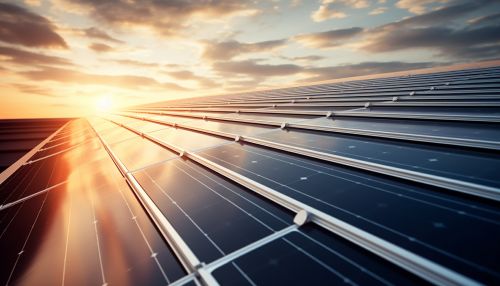Energy Harvesting
Introduction
Energy harvesting, also known as power harvesting or energy scavenging, is the process by which energy is derived from external sources (e.g., solar power, thermal energy, wind energy, salinity gradients, and kinetic energy), captured, and stored for small, wireless autonomous devices, like those used in wearable electronics and wireless sensor networks.
Principles of Energy Harvesting
Energy harvesting devices capture and store the residual energy that exists in their environment. This energy can come from a variety of sources, including solar, wind, tidal, geothermal, and thermal sources. Energy harvesters accumulate and store this ambient energy for use by electronic devices and systems.


Types of Energy Harvesting
Solar Energy Harvesting
Solar energy harvesting is the most common form of energy harvesting. It involves the use of photovoltaic cells to convert sunlight into electricity. This electricity can then be stored and used to power electronic devices and systems.
Thermal Energy Harvesting
Thermal energy harvesting involves the capture and conversion of waste heat from industrial processes, power plants, vehicles, and even the human body into electricity. This is typically accomplished through the use of thermoelectric generators that convert temperature differences into electric voltage.
Vibration Energy Harvesting
Vibration energy harvesting captures the energy produced by mechanical vibrations, such as those produced by machinery, vehicles, and buildings. This energy is then converted into electrical energy, typically using piezoelectric materials or electromagnetic induction.
Radio Frequency Energy Harvesting
Radio frequency energy harvesting involves the capture and conversion of ambient radio frequency signals, such as those emitted by mobile phone networks and Wi-Fi transmitters, into electricity. This is typically achieved using antennas and rectifying circuits.
Applications of Energy Harvesting
Energy harvesting technology has a wide range of applications, particularly in areas where it is difficult or impractical to connect to the power grid or replace batteries.
Wearable Electronics
In wearable electronics, energy harvesting can be used to power devices such as fitness trackers, smartwatches, and medical devices. For example, a kinetic energy harvester could be used to power a fitness tracker by capturing and converting the energy generated by the user's movements.
Wireless Sensor Networks
Wireless sensor networks (WSNs) are networks of spatially distributed sensors that monitor physical or environmental conditions. Energy harvesting can be used to power these sensors, eliminating the need for battery replacement and enabling the sensors to operate in remote or inaccessible locations.
Internet of Things
In the Internet of Things (IoT), energy harvesting can be used to power the myriad of small, wireless devices that make up the IoT ecosystem. This can significantly extend the lifespan of these devices and reduce the need for battery replacement.
Challenges and Future Directions
While energy harvesting holds great promise, there are also significant challenges that must be overcome. These include improving the efficiency of energy conversion, increasing the amount of energy that can be stored, and developing low-power electronics that can operate effectively with the small amounts of power generated by energy harvesters.
Despite these challenges, the future of energy harvesting looks promising. Advances in materials science, nanotechnology, and low-power electronics are expected to drive significant improvements in energy harvesting technology in the coming years.
